Numerical Simulation and Experiment on Pill Coating of Red Clover Seeds under the Action of Vibrating Force Field
Abstract
:1. Introduction
2. Materials and Methods
2.1. Coating Machine Structure and Principles
2.2. Force Analysis of the Pellet Coating Process
2.2.1. Force Analysis of Particle Motion
2.2.2. Force Analysis of Pelletizing Coating Process under Vibration Force Field
2.2.3. Mechanical Analysis of Seed Powder Bonding Process
2.3. Numerical Simulation of Pill Granulation Coating
Simulation Model Establishment and Parameter Setting
2.4. Interspecies Powder Mixing Process Simulation and Experiment
Evaluation Index of Seed Powder Mixing
2.5. Analysis of Simulation and Methods
2.5.1. One-Way Test
2.5.2. Orthogonal Test
3. Results and Discussion
3.1. Results and Analysis of the One-Way Test
3.2. Orthogonal Test Results and Analysis
4. Discussion
5. Conclusions
- (1)
- Through our research, we discovered that, during the seed pelletization process, adjusting the rotational speed of the coating pot and introducing a vibration force field can enhance the uniformity of the seed powder mixing, leading to a significant improvement in the seed pelletization pass rate. Furthermore, our analysis of the single-factor test results revealed a consistent trend between the discrete coefficient obtained from the discrete element simulation and the pilling qualification rate obtained from the physical test. Hence, the discrete coefficient can be employed as an effective evaluation index for determining the optimal combination of operating parameters.
- (2)
- The discrete coefficient was employed as the evaluation criterion, and the rotational speed, vibration frequency, and vibration amplitude of the coating pot were chosen as the test factors for the orthogonal experimental study. The analysis of variance (ANOVA) of the experimental results indicated that the most favorable pelletizing effect was achieved at the coating pot speed, coating pot vibration frequency, and coating pot vibration amplitude of 300 rpm, 2.526 Hz, and 5.843 mm, respectively. The correctness of the optimization results was validated through experiments, which showed a good agreement with the optimization results. These findings can provide technical support and theoretical guidance for the pill coating process of small seeds.
Author Contributions
Funding
Data Availability Statement
Conflicts of Interest
References
- Ou, C.M.; Mao, P.S. Progress of Research and Application for Grass Seed Coating Technology. Seed 2019, 38, 63–67. [Google Scholar] [CrossRef]
- Zhou, J.; Qiao, G.H. Progress of research related to grassland degradation management. Agric. Econ. 2020, 9–11. [Google Scholar] [CrossRef]
- Taylor, A.G.; Allen, P.S.; Bennett, M.A.; Bradford, K.J.; Burris, J.S.; Misra, M.K. Seed enhancements. Seed Sci. Res. 1998, 8, 245–256. [Google Scholar] [CrossRef]
- Wen, H.J.; Gao, C.G.; Liang, Q.; Ma, W.J. Introduction of CIMBRIA HEID CC20 rotary seed coating machine in Denmark. Mod. Agric. 2002, 45. [Google Scholar] [CrossRef]
- Mu, M. Seed processing goes intelligent: Intimate contact with the latest technology of German giant PETKUS. Contemp. Agric. Mach. 2019, 32–33. [Google Scholar]
- Song, Y.; Zhang, J.; Qu, G.B. Review of seed processing technology and equipment development. Agric. Mach. Qual. Superv. 2011, 22–23+30. [Google Scholar]
- Zhang, H.J.; Hu, Z.C.; Wang, H.O.; Tian, L.J.; Peng, L.J. The development of seed pelletizing technology. Jiangsu Agric. Sci. 2011, 39, 506–507. [Google Scholar] [CrossRef]
- Shao, Z.W. Design and Experiment of Pelleting System of Agrograss Seed Coating Machine under Vibration. Master’s Thesis, Inner Mongolia Agricultural University, Hohhot, China, 2018. [Google Scholar]
- Zhao, Q.B.; Huang, N.S.; Xu, M.L. Summary of research and development ofpelleting tobacco seed technique in China. China Tob. Sci. 2002, 25–27. [Google Scholar] [CrossRef]
- Wang, W.C.; Wang, R.H.; Gao, Y.J.; Ai, Y.K.; Liu, X. Exploration on Processing Technology of Sugar Beet Seed Pelleting. China Sugar 2016, 38, 46–48+51. [Google Scholar] [CrossRef]
- Hu, Z.C.; Ji, F.L.; Gao, G.H.; Wang, H.O.; Peng, B.L.; Hu, L.L. 5B-5 intelligent seed coating machine. J. Agric. Mach. 2007, 205–207. [Google Scholar] [CrossRef]
- Guo, W.W.; Chen, X.Y.; Chen, M.D. Design of Seed Coating Machine Based on Air Suspension. Agric. Eng. 2019, 9, 75–78. [Google Scholar] [CrossRef]
- Han, B.; Liu, Q.; Gao, Y.L.; Yang, S.J.; Guo, C.; Dong, X.W.; Li, Y.M. Numerical simulation and experiment of seeding performance of seedand medicine mixing device of soybean coating machine. J. Northeast. Agric. Univ. 2020, 51, 79–86. [Google Scholar] [CrossRef]
- Dai, N.Z. Design and Experiment of Pelleting Vibratory Coating Machine for Agropyson Seed. Master’s Thesis, Inner Mongolia Agricultural University, Hohhot, China, 2021. [Google Scholar]
- Zhao, Y.Z.; Zhang, X.Q.; Liu, Y.L. Augmenting the mixing of size-type binary granular systems in a rotating horizontal drum. Acta Phys. Sin. 2009, 58, 8386–8393. [Google Scholar] [CrossRef]
- Wang, J.N.; Xie, H.X.; Hu, Z.C.; Hu, L.L.; Peng, B.L.; Liu, M.J. Parameter optimization on mechanical coating processing of rotary table-roller coating machine for peanut seeds. Trans. Chin. Soc. Agric. Eng. 2017, 33, 43–50. [Google Scholar] [CrossRef]
- Hou, Z.F.; Dai, N.Z.; Chen, Z.; Qiu, Y.; Zhang, X.W. Measurement and calibration of physical property parameters for Agropyron seeds in a discrete element simulation. Trans. Chin. Soc. Agric. 2020, 36, 46–54. [Google Scholar] [CrossRef]
- Hou, Z.F. Discrete Element Simulation and Experimental Study on Vibration Pelleting Coating Machine for Forage Seeds. Ph.D. Thesis, Inner Mongolia Agricultural University, Hohhot, China, 2023. [Google Scholar]
- Liu, Q. Optimal Design and Experimental Study on Seed and Medicine Mixing Device of Soybean Seed Coating Machine. Master’s Thesis, Northeast Agricultural University, Hohhot, China, 2021. [Google Scholar]
- Hou, Z.F.; Chen, L.J.; Chen, Z.; Qiu, Y.; Mi, L.K.; Shao, Z.W.; Dai, N.Z. Study on Motion Law and Optimum Parameters of Pelleted Coating of Forage Seeds Based on Discrete Element Method. J. Agric. Mech. Res. 2021, 43, 184–191. [Google Scholar] [CrossRef]
- Nan, X.; Liu, Y.H.; Sun, Y.C.; Zhao, X.L.; Li, Y.C.; Rao, Z. Study on the relationship between permeability coefficient and liquid bridge force in soil seepage. Chin. J. Soil Sci. 2021, 52, 322–327. [Google Scholar] [CrossRef]
- Ma, X.J.; Liu, M.; Hou, Z.F.; Gao, X.Y.; Bai, Y.; Guo, M.J. Transactions of the Chinese Society of Agricultural Engineering. Trans. Chin. Soc. Agric. Eng. 2023, 39, 43–52. [Google Scholar] [CrossRef]
- Lv, Y.L. Research on Mixed Mechanism Based on DEM in Vertical Turbulence Mixer. Master’s Thesis, Wuhan University of Technology, Wuhan, China, 2019. [Google Scholar]
- Tang, T.; He, Y.; Ren, A.; Wang, T. Experimental Study and DEM Numerical Simulation of Dry/Wet Particle Flow Behaviors in a Spouted Bed. Ind. Eng. Chem. Res. 2019, 58, 15353–15367. [Google Scholar] [CrossRef]
- Muguruma, Y.; Tanaka, T.; Tsuji, Y. Numerical simulation of particulate flow with liquid bridge between particles (simulation of centrifugal tumbling granulator). Powder Technol. 2000, 109, 49–57. [Google Scholar] [CrossRef]
- Dong, C.X.; Wu, T.; Lv, X.K. Simulation Analysis of Vibratory Mixing Based on the EDEM. Mech. Res. Appl. 2017, 30, 38–41. [Google Scholar] [CrossRef]
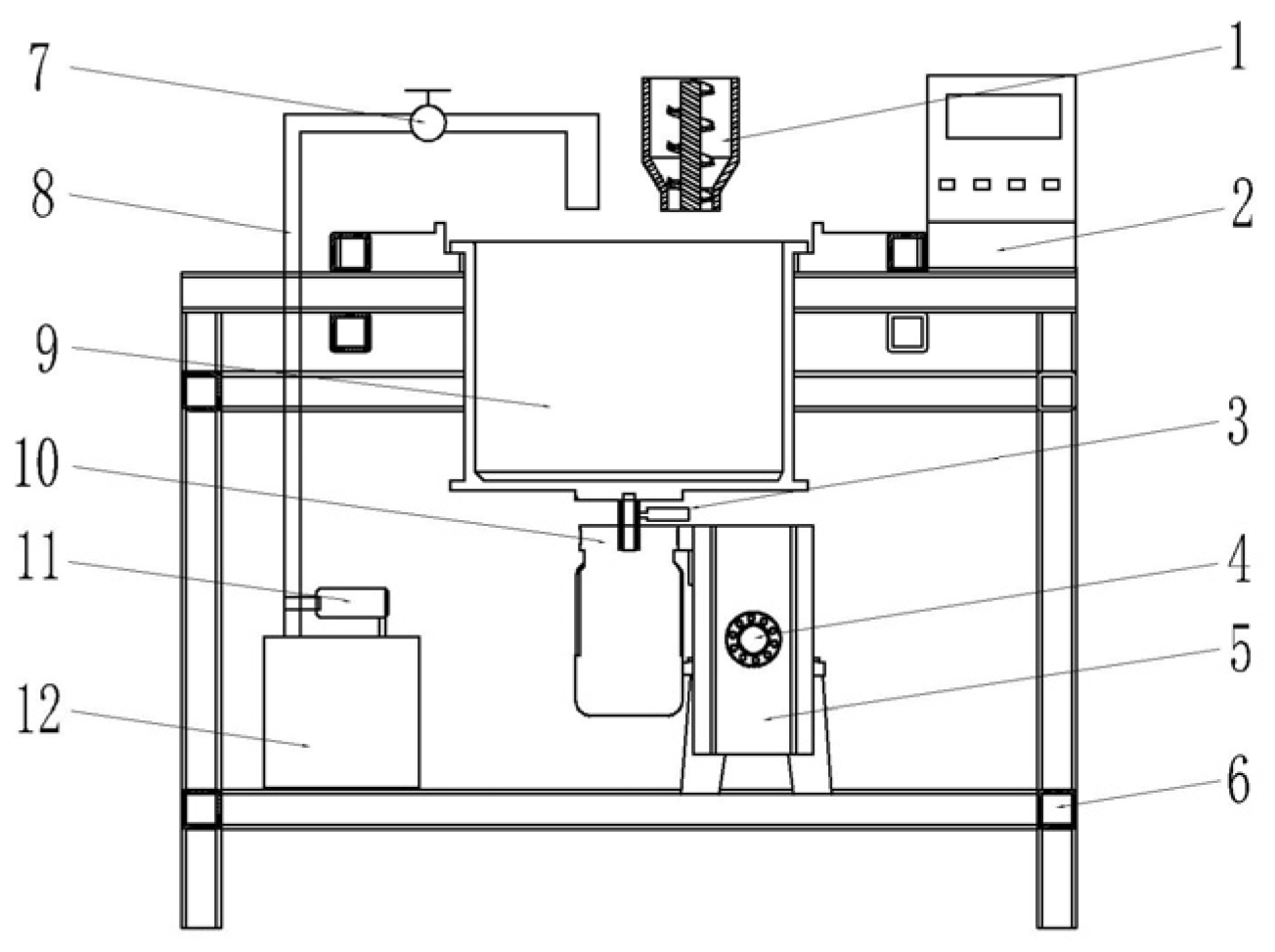
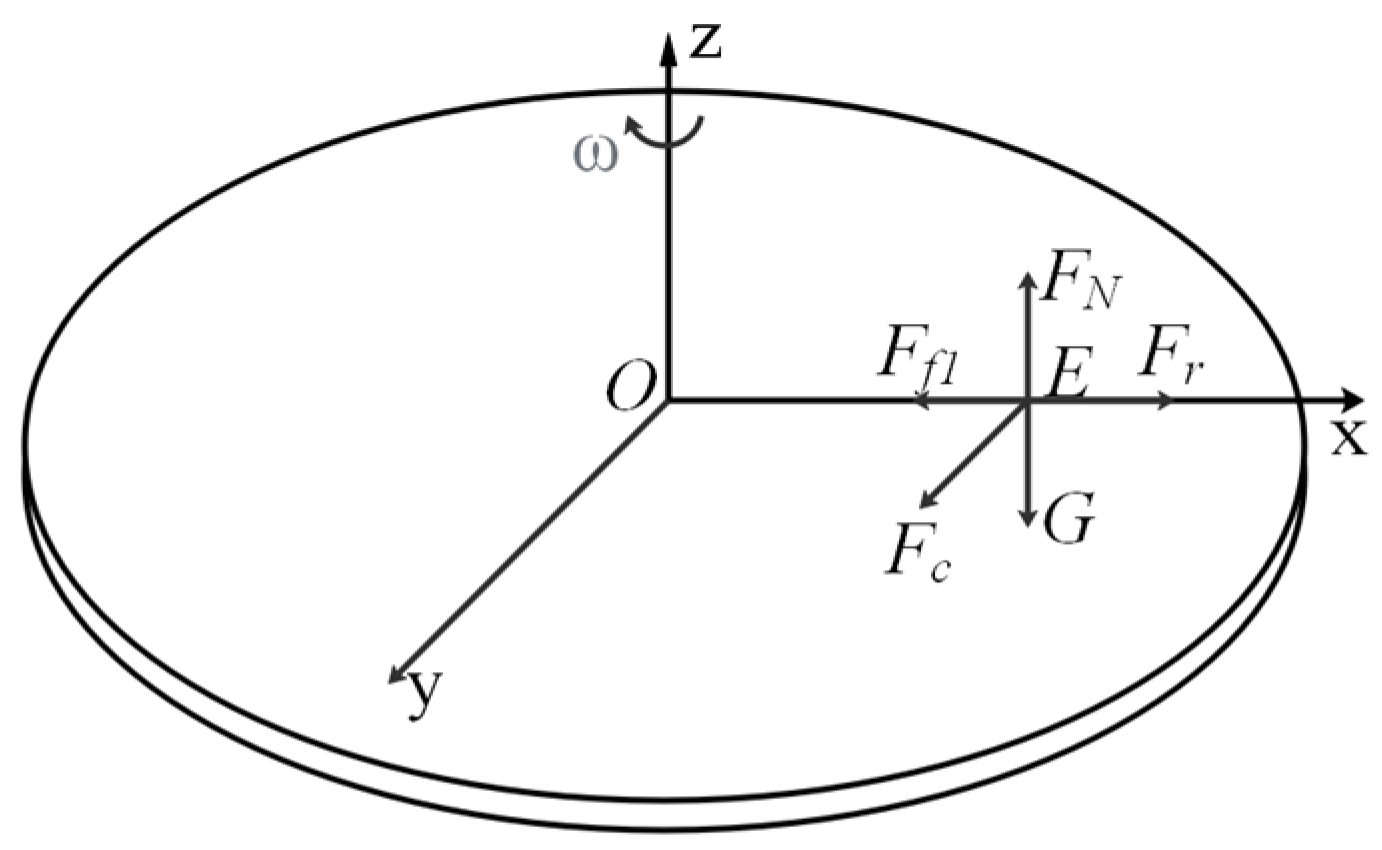
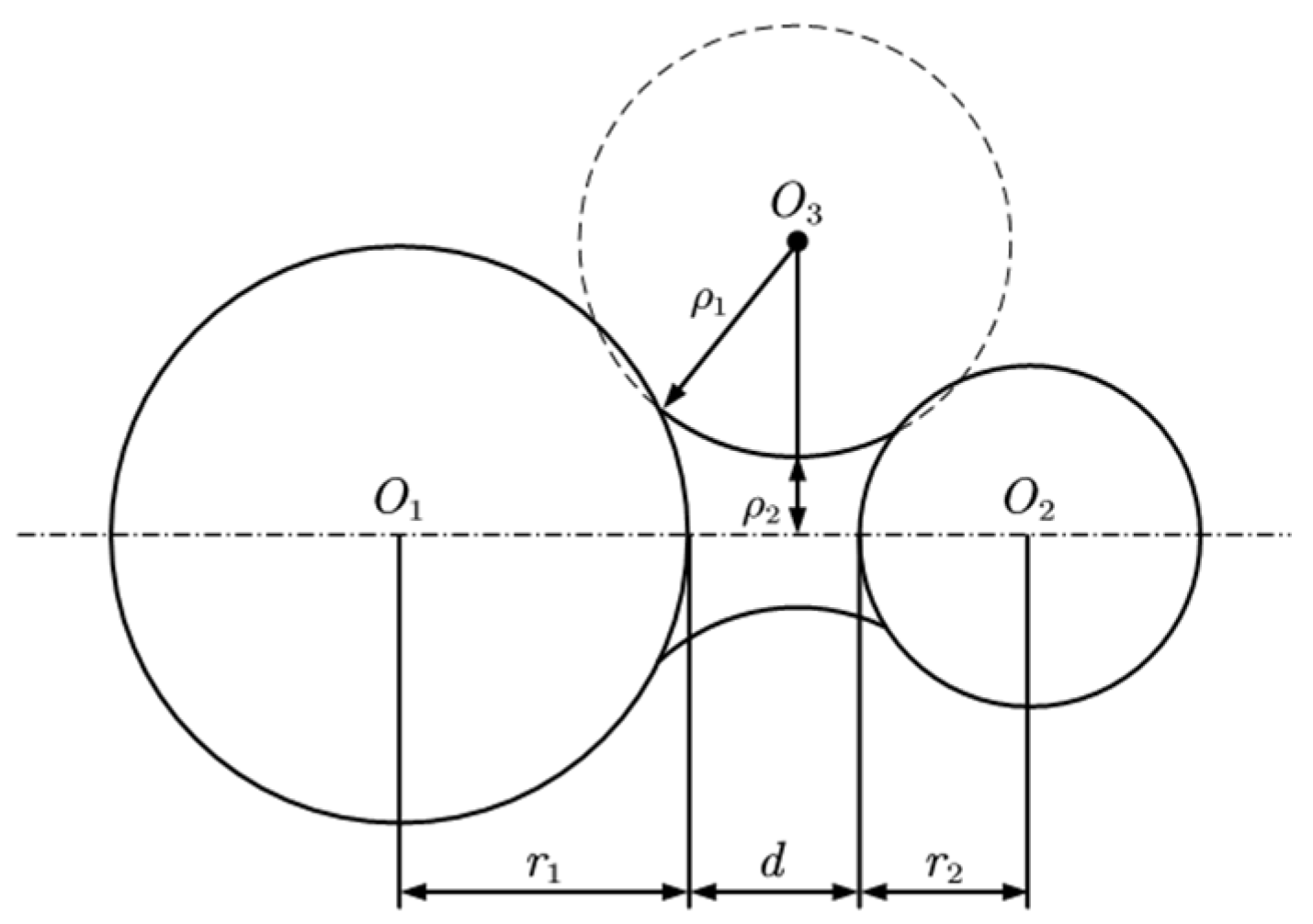


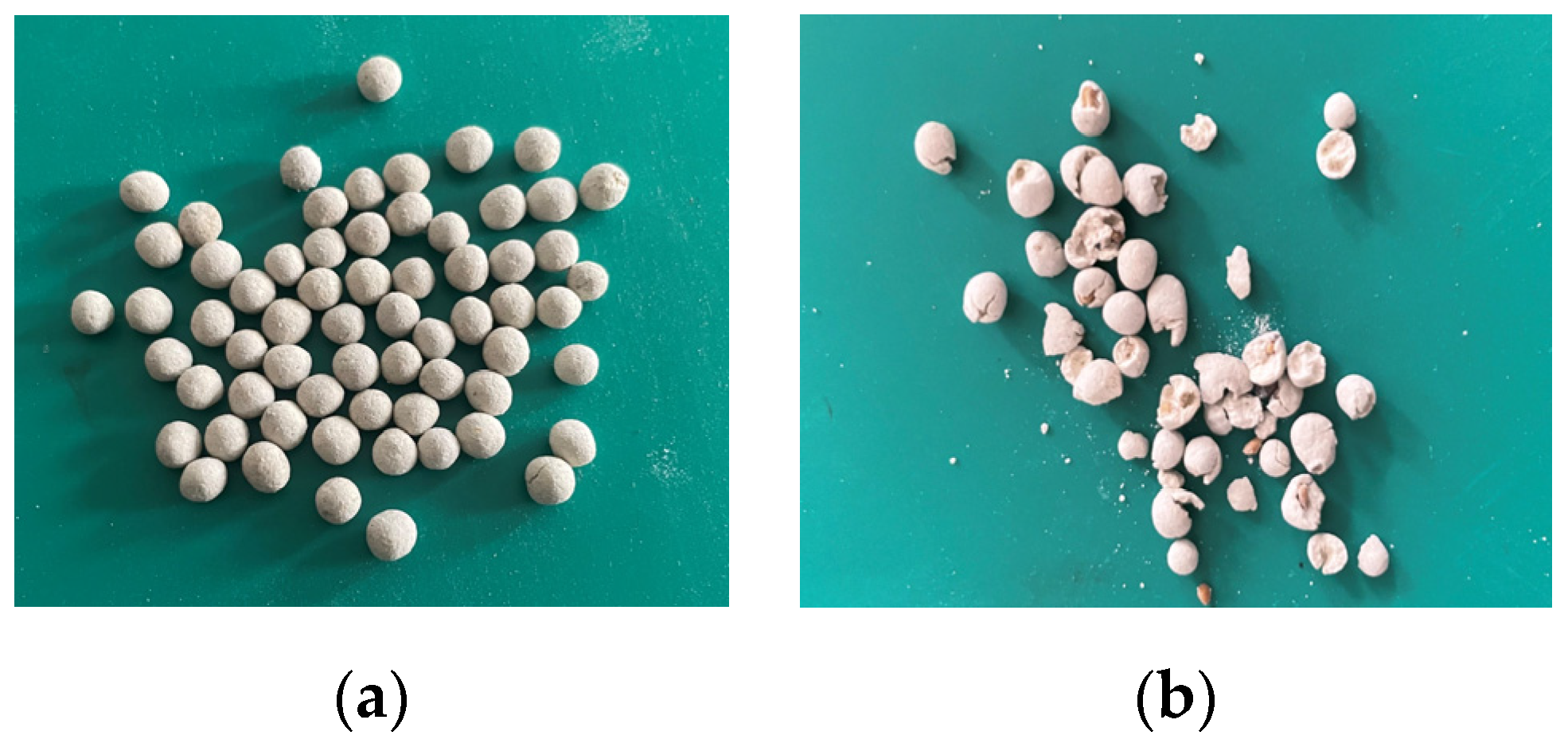
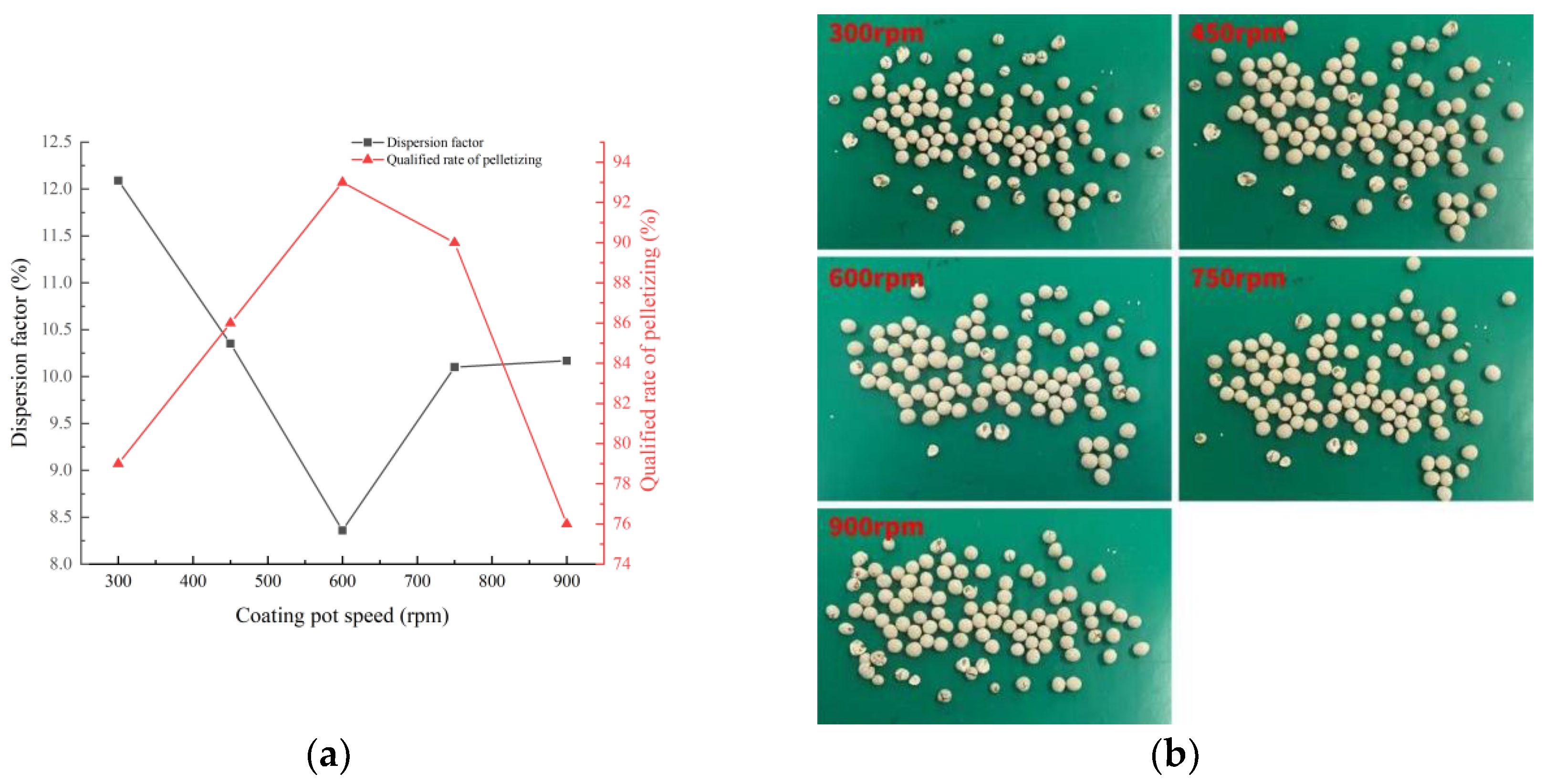



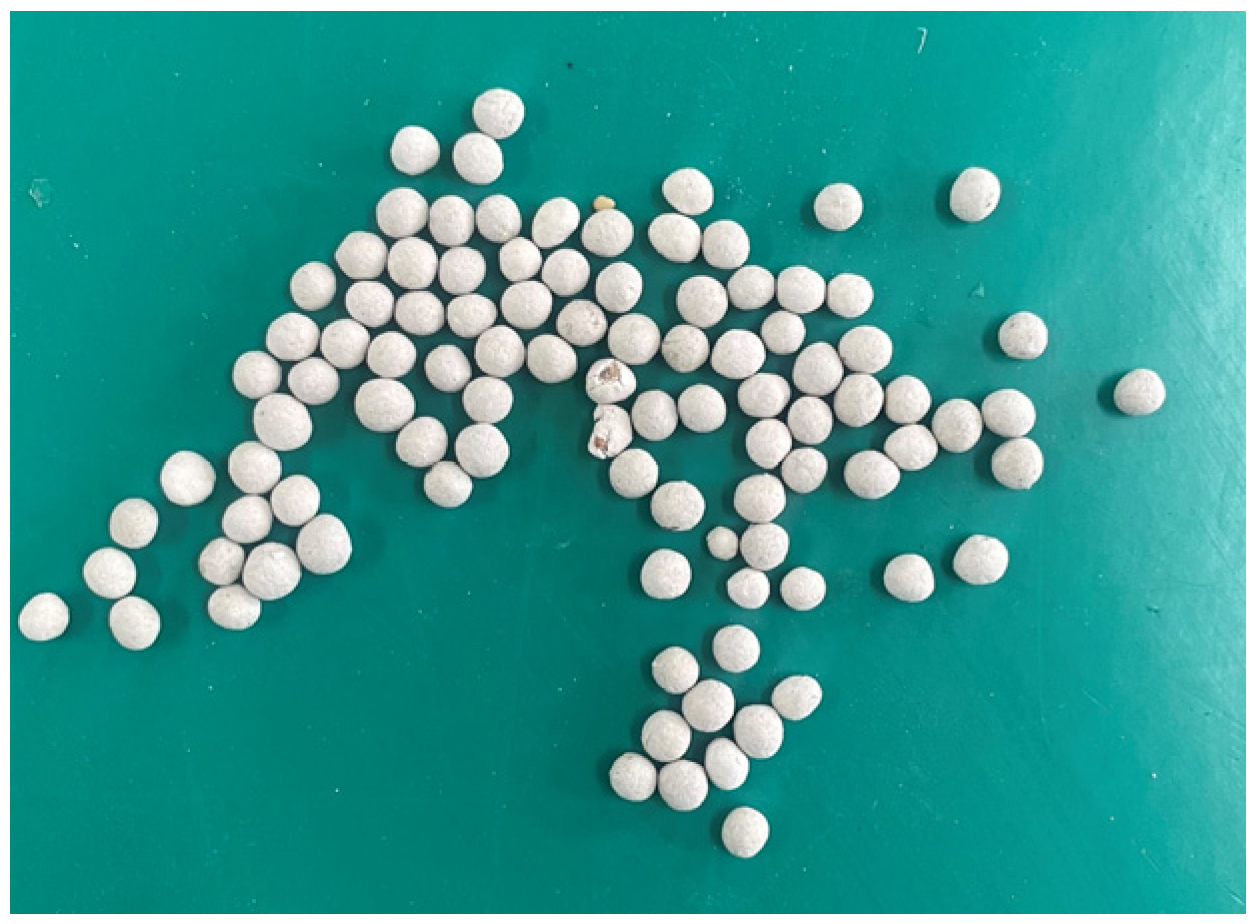
| Item | Unit | Powder |
|---|---|---|
| Dimension (L × W × H) | mm | 890 × 400 × 850 |
| Machine quality | kg | 50 |
| Test Object | Parameters | Values |
|---|---|---|
| Red clover seeds | Density/(kg·m−3) | 1279 |
| Shear modulus/Pa | 1.25 × 107 | |
| Poisson’s ratio | 0.3 | |
| Powder | Density/(kg·m−3) | 1833 |
| Shear modulus/Pa | 3 × 107 | |
| Poisson’s ratio | 0.296 | |
| Red Clover Seed and Red Clover Seed | Static friction coefficient | 0.605 |
| Rolling friction coefficient | 0.637 | |
| Powders and Powders | Static friction coefficient | 0.887 |
| Rolling friction coefficient | 0.319 | |
| JKR surface energy | 0.162 | |
| Seeds and Powder | Restitution coefficient | 0.246 |
| Static friction coefficient | 0.776 | |
| Rolling friction coefficient | 0.255 |
| Level | Coating Pot Speed A/rpm | Vibration Frequency B/Hz | Vibration Amplitude C/mm |
|---|---|---|---|
| 1 | 300 | 2 | 2 |
| 2 | 450 | 3 | 3 |
| 3 | 600 | 4 | 4 |
| 4 | 750 | 5 | 5 |
| 5 | 900 | 6 | 6 |
| Level | Coating Pot Speed A/rpm | Vibration Frequency B/Hz | Vibration Amplitude C/mm |
|---|---|---|---|
| −1 | 300 | 2 | 2 |
| 0 | 600 | 4 | 4 |
| 1 | 900 | 6 | 6 |
| Test Serial Number | Coating Pot Speed A/rpm | Vibration Frequency B/Hz | Cladding Pot Inclination C/° | Dispersion Factor Cv/% |
|---|---|---|---|---|
| 1 | −1 | 0 | −1 | 8.76334 |
| 2 | 0 | 1 | 1 | 10.4656 |
| 3 | 1 | 1 | 0 | 11.6207 |
| 4 | 0 | −1 | −1 | 12.5329 |
| 5 | −1 | 1 | 0 | 11.5181 |
| 6 | 0 | 0 | 0 | 19.0231 |
| 7 | 0 | 0 | 0 | 18.9931 |
| 8 | 1 | −1 | 0 | 15.2058 |
| 9 | −1 | −1 | 0 | 12.4992 |
| 10 | 0 | −1 | 1 | 9.56758 |
| 11 | 0 | 1 | −1 | 8.37451 |
| 12 | 0 | 0 | 0 | 19.0931 |
| 13 | 0 | 0 | 0 | 19.1131 |
| 14 | 1 | 0 | 1 | 9.09818 |
| 15 | −1 | 0 | 1 | 9.04461 |
| 16 | 1 | 0 | −1 | 11.2257 |
| 17 | 0 | 0 | 0 | 18.0931 |
| Source of Variance | Sum of Square | F-Value | p-Value |
|---|---|---|---|
| Model | 0.0272 | 193.54 | <0.0001 ** |
| A | 0.0004 | 22.70 | 0.0020 ** |
| B | 0.0008 | 49.05 | 0.0002 ** |
| C | 0.0001 | 5.93 | 0.0451 * |
| AB | 0.0002 | 10.86 | 0.0132 * |
| AC | 0.0001 | 9.29 | 0.0186 * |
| BC | 0.0006 | 40.94 | 0.0004 ** |
| A2 | 0.0049 | 316.79 | <0.0001 ** |
| B2 | 0.0031 | 200.28 | <0.0001 ** |
| C2 | 0.0147 | 939.82 | <0.0001 ** |
| Lack of fit | 0.6073 | 0.6445 |
Disclaimer/Publisher’s Note: The statements, opinions and data contained in all publications are solely those of the individual author(s) and contributor(s) and not of MDPI and/or the editor(s). MDPI and/or the editor(s) disclaim responsibility for any injury to people or property resulting from any ideas, methods, instructions or products referred to in the content. |
© 2023 by the authors. Licensee MDPI, Basel, Switzerland. This article is an open access article distributed under the terms and conditions of the Creative Commons Attribution (CC BY) license (https://creativecommons.org/licenses/by/4.0/).
Share and Cite
Guo, M.; Cai, X.; Ma, X.; Hou, Z.; Tong, X.; Liu, H. Numerical Simulation and Experiment on Pill Coating of Red Clover Seeds under the Action of Vibrating Force Field. Processes 2023, 11, 2551. https://doi.org/10.3390/pr11092551
Guo M, Cai X, Ma X, Hou Z, Tong X, Liu H. Numerical Simulation and Experiment on Pill Coating of Red Clover Seeds under the Action of Vibrating Force Field. Processes. 2023; 11(9):2551. https://doi.org/10.3390/pr11092551
Chicago/Turabian StyleGuo, Mengjun, Xuyang Cai, Xuejie Ma, Zhanfeng Hou, Xin Tong, and Haiyang Liu. 2023. "Numerical Simulation and Experiment on Pill Coating of Red Clover Seeds under the Action of Vibrating Force Field" Processes 11, no. 9: 2551. https://doi.org/10.3390/pr11092551
APA StyleGuo, M., Cai, X., Ma, X., Hou, Z., Tong, X., & Liu, H. (2023). Numerical Simulation and Experiment on Pill Coating of Red Clover Seeds under the Action of Vibrating Force Field. Processes, 11(9), 2551. https://doi.org/10.3390/pr11092551








